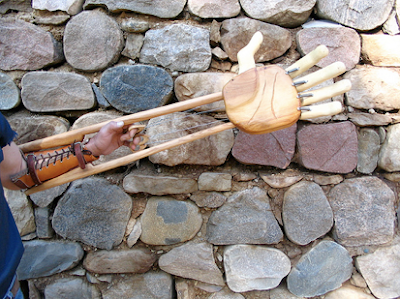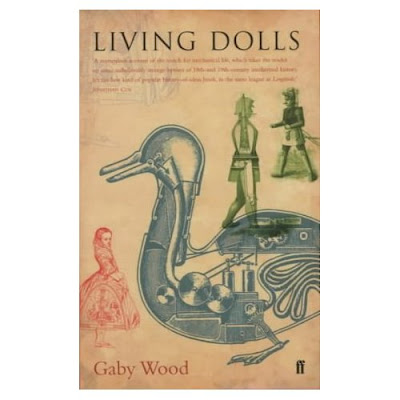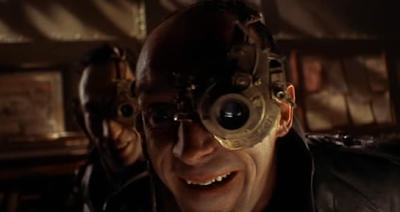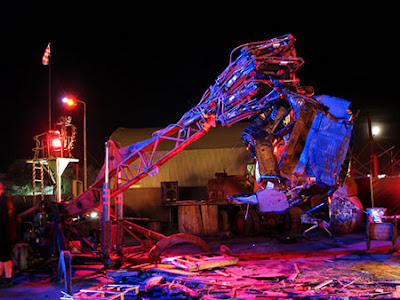
This year, in an effort to get the count in so our school could get more accurate funding, I became a census enumerator for the Non Response Follow Up (NRFU) part of the census operation.
It was interesting because, being someone who moved back to the area in which I grew up, I finally got to go down all the roads I'd wondered about as a kid -- and explored the outer reaches of Last Chance Road, which winds and bumps for eight miles or more into the back country, unpaved all the way. Some of it requires four wheel drive just to be able to get over the lumpy terrain or up the super steep hills. People there live in all kinds of interesting situations.
When I told other census workers I was going up Last Chance, they looked at me in awe. "Aren't you afraid to go up there?" one person asked me. "I had to go there to find houses. Brrr," and she shuddered. Other people had similar reactions. "Be careful," one person told me, as if I might not come back.
However, I knew a great many of the people who live back there. Some of them are teachers at the local school, and a great many have kids who go to school with my children. The larger majority of them are people who wanted to own their own land and their own homes, who wanted to grow gardens and live in nature, but could not afford to do it in fancier "rural" neighborhoods like Bonny Doon -- which has city garbage service, post boxes, and a bus line. Instead, they opt to drive in and out the five or six miles of rutted dirt road to their houses in the knowledge they can live their lives undisturbed, without a mortgage or a crazy lifestyle to support it.
Some of them have been there from the beginning. One of the teachers, for example, has a half-adobe house with hand-hewn beams and lives in a valley rich in creek-bottom soil. The garden, and the plants and flowers all around their house are like a fairy tale -- the result of more than 35 years of hard work. They built their house themselves, with no hired help, and it's a lovely work of art, like a house out of the Brothers Grimm.
 A Low Impact Woodland Home – but not from here. This one's in Wales...
A Low Impact Woodland Home – but not from here. This one's in Wales...Another family homesteaded a piece of property where the soil wasn't quite so rich, but 36 years on the garden is extraordinary: fruit trees and bowers of roses, vegetables and one of the most beautiful hand-built log houses I've ever seen. It took three and a half years to build, hauling the trees in from the forest, peeling them and setting them; cutting the floorboards and making kitchen cabinets from hand-cut boards without the benefit of power tools.
Other houses perch on hillsides with extraordinary views, tucked among the manzanita; and there was one amazing treehouse I came across that towered over a hundred feet up in a huge tree, a three-tiered platform with arguably the most breathtaking vistas anywhere.
Some of the houses there are newer, and built with less creative endeavors in mind, of modern trucked-in materials; there are even all-mod-con trailers parked here and there in the woods. But they have the same idea in mind: a beautiful place, undisturbed by your neighbors. Even people who live only a few yards away from each other don't bother each other, except to say "hi" when you are getting in and out of your car. The unwritten rule is that they are all out here for one basic reason: to be left alone to live their lives. How that makes these people scary, I can't imagine. I suppose the outside reaction to their life-choices says more about the people who are scared than it does about the people they are scared of.
I wasn't part of the 1960's and early 1970's ideology which some of the old-timers up Last Chance have managed to successfully embody. However, my parents were. They were a bit old to be hippies, but they had a creative (some would say bohemian) outlook which fit well with the can-do attitude of the times. In 1967 they built one of the first summer craft schools in the United States and called it Big Creek Pottery. It was more than a place to go to learn to throw pots; it was a place where people discovered themselves, dropped some of the pre-existing ideas of who they were. That sounds cheesy, but think about it: they learned how to build a kiln; they learned the chemistry of glaze formulas; they had lectures and slide shows and demonstrations by some of the leading craftspeople of the time. And they stepped out of their lives for a moment, into a place in the country, where there was hand-cooked food, two acres of vegetable garden, goats, chickens (fresh eggs!), and all the stars in the world to look at when they stayed up at night. It was idyllic, and it was hard not to go home changed.
Most of my early adulthood was spent coming to terms with the fact that adult live would never be like that. The eighties and nineties were enough to teach me that those days might never return. However, now I've come back to the place I grew up I'm finding new generations of believers in the idyll: this area is rife with organic farms, and new crops of idealists keep Last Chance alive and kicking. The can-do attitude has not died.
 Wavy Gravy
Wavy GravyThis summer my children went to Camp Winnarainbow, a circus camp which was started by 1960's icon Wavy Gravy. I sent them there because it sounded fun, learning stiltwalking, trapeze, tightrope, juggling, you name it. When they came back changed, I couldn't help thinking of Big Creek Pottery and wondering what experiences they'd had in their time away. My younger daughter, given to fits of evil genius which tended to ruin her sister's life, suddenly was making an effort to be sympathetic and good-hearted. The older daughter seemed calmer, and talked about wanting to do acting. She'd never wanted to be onstage in front of lots of people before.
Winnarainbow's slogan is "Toward the Fun," a humorous take on the Sufi expression "Toward the One." And as it happens, there is another agenda here: one of giving children a safe place to go and explore parts of themselves they don't get to be with every day -- without fear of being made fun of or the sense that they are weird. There is a whole tent devoted to costumes (one drawer is labeled "gorilla parts"): spangly things, wigs, silly hats, ball gowns, makeup. Children can access this treasure house at will, and often wander around with costume parts on as part of the everyday routine. The Tornado of Talent goes on almost nightly, and everyone gets to show what they can do. My younger daughter, who had been bullied at school this last year, discovered an insane talent for improv -- when I got there, strangers would come up to me and tell me she had the best sense of humor in the camp -- and is now putting that talent to use practicing comebacks for the bullying remarks she might encounter next year.
The camp is associated with Patch Adams, and some of the counselors have been Clown Ambassadors to other countries. Their stated philosophy is to teach responsibility for one's own behavior, and develop confidence, inner security, and appropriate self expression; to value the uniqueness of each individual within a diversity of backgrounds; and "to provide a training ground to nurture leaders for a peaceful, harmonious and sustainable culture."
I'm not an advocate of backwards-looking thinking. I don't believe we should always be remembering the "Good Old Days" and wishing we could go back. But I do believe in learning from our past. There are a lot of failure stories from the 1960s: hungry people abandoning their attempts at self-sufficiency; communes where people had impossible falling-outs; the sexual revolution backfiring as women who didn't want to sleep with every living being were told they were "uptight."
At the same time it can be awfully tempting to look back and see a time with fewer electronic devices, when we weren't all expecting Internet access and people had so very much time to actually build things and make things - and talk to each other face to face. The loss of hand-work as a regular part of life is a definite problem with the way we do things now, which is why I'm always so pleased to see people making things with their hands. Here in California, I see music programs, art programs and all the shop and woodworking programs being cut out of existence -- not only that but the equipment is being sold off and the buildings closed or even pulled down. The outlay involved to rebuild these programs, buying the equipment and so on, will be impossible for many, many years; and in the meantime, generations of children are being raised who aren't being taught to do anything with their hands other than type and write (and use a Wii). And sports, of course, but not all of us are cut out for that.
So it's easy to look at a time when most people did have those skills - the skills to build their own houses and to fix their own cars and make gardens out of poor soil, and did have time, and worked together to build a shared vision of the future - and see a time that's slipping away. And yet, here I am, talking to a much vaster audience, all about making things and being idealistic. And there's
Make, and
Instructables, and learning things via YouTube, all the products of visionaries. My daughter learned how to do Jacob's ladder from an unknown 11-year-old boy on YouTube; how cool is that? You can convert your diesel car to cooking oil, and power your generator on walnut shells, if you learn how at places like
Maker Faire which is the coolest thing ever, and a place where like-minded visionary people can come together. It really isn't a lost culture, after all, we're just doing it a little differently. So I'll finish with one last exhortation: Make stuff. Do it a lot. Use your hands. And don't be afraid to change your environment. Or the world.
 LInks:A Wonderful book
LInks:A Wonderful book by Juhani Pallasmaa called
The Thinking Hand:
"In The Thinking Hand, Juhani Pallasmaa reveals the miraculous potential of the human hand. He shows how the pencil in the hand of the artist or architect becomes the bridge between the imagining mind and the emerging image. The book surveys the multiple essences of the hand, its biological evolution and its role in the shaping of culture, highlighting how the hand–tool union and eye–hand–mind fusion are essential for dexterity and how ultimately the body and the senses play a crucial role in memory and creative work."







.jpeg)















